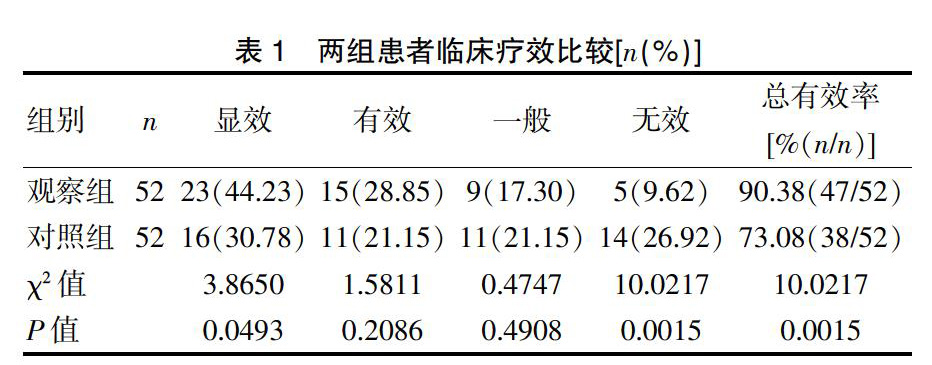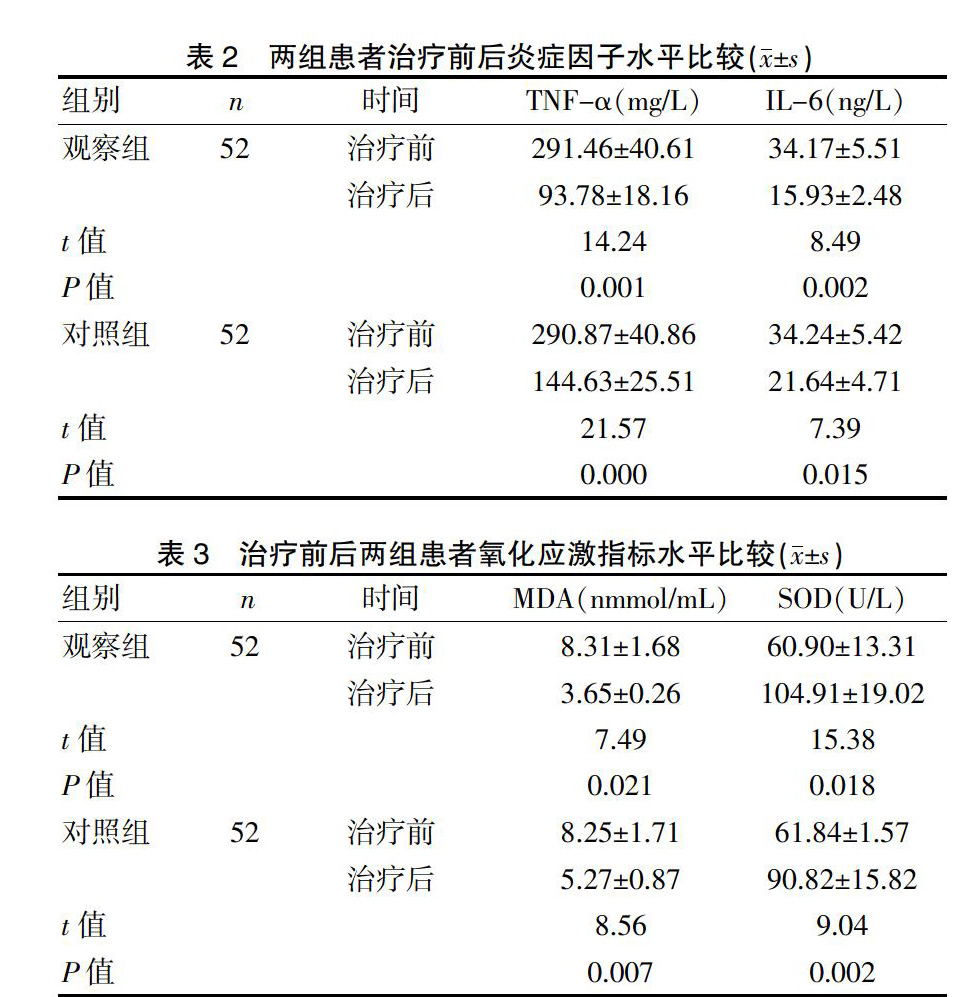程海冰


[摘要] 目的 探讨依达拉奉联合奥拉西坦对急性脑梗死患者的疗效及对血清炎性因子与氧化应激指标的影响。方法 选取我院2015年1月~2017年1月收治的急性脑梗死患者104例为研究对象,均经临床检查确诊,根据不同治疗方法分为两组,两组患者均给予抗感染、脑细胞保护、颅内压降低、血压控制等常规治疗,对照组(n=52)给予奥拉西坦治疗,观察组(n=52)在对照组基础上给予依达拉奉治疗,对比两组患者临床疗效、治疗前后炎症因子水平以及氧化应激指标水平。 结果 两组患者总有效率(90.38% vs 73.08%)比较,差异有统计学意义(P<0.05)。治疗前两组患者TNF-α、IL-6水平比较差异无统计学意义(P>0.05);治疗后观察组患者TNF-α、IL-6水平明显低于对照组,差异有统计学意义(P<0.05)。治疗前两组患者MDA、SOD水平比较差异无统计学意义(P>0.05);治疗后观察组患者MDA水平明显低于对照组,SOD水平明显高于对照组,差异具有统计学意义(P<0.05)。 结论 依达拉奉联合奥拉西坦两种药物可以进一步降低脑损伤,促进神经功能恢复,因此值得临床推广。
[关键词] 依达拉奉;奥拉西坦;急性脑梗死;临床疗效;血清炎性因子;氧化应激指标
[中图分类号] R743.3 [文献标识码] B [文章编号] 1673-9701(2019)05-0045-03
[Abstract] Objective To investigate the effect of edaravone combined with oxiracetam on patients with acute cerebral infarction and the effect on serum inflammatory factors and oxidative stress indicators. Methods A total of 104 patients with acute cerebral infarction admitted in our hospital from January 2015 to January 2017 were enrolled in the study. All patients were diagnosed by clinical examination. They were divided into two groups according to different treatment methods. Both groups were given conventional treatments such as anti-infective and brain, cytoprotection, intracranial pressure reduction, and blood pressure control. The control group(n=52) was given oxiracetam. The observation group (n=52) was given edaravone on the basis of the treatment of the control group. The patient's clinical efficacy and inflammatory factor levels before and after treatment as well as oxidative stress indicators were compared. Results There was significant difference in the clinical efficacy of two groups (90.38% vs 73.08%), which was statistically significant (P<0.05). There was no significant difference in the levels of tumor necrosis-α and interleukin-6 between the two groups before treatment(P>0.05). The levels of tumor necrosis-α and interleukin-6 in the observation group were significantly lower than those in the control group after treatment, and the difference was statistically significant (P<0.05). There was no significant difference in the levels of malondialdehyde and superoxide dismutase between the two groups before treatment(P>0.05). After treatment, the level of malondialdehyde in the observation group was significantly lower than that in the control group, and the level of superoxide dismutase in the observation group was significantly higher than that of the control group, and the difference was statistically significant (P<0.05). Conclusion Edaravone combined with oxiracetam can further reduce brain damage and promote the recovery of nerve function, so it is worthy of clinical promotion.



